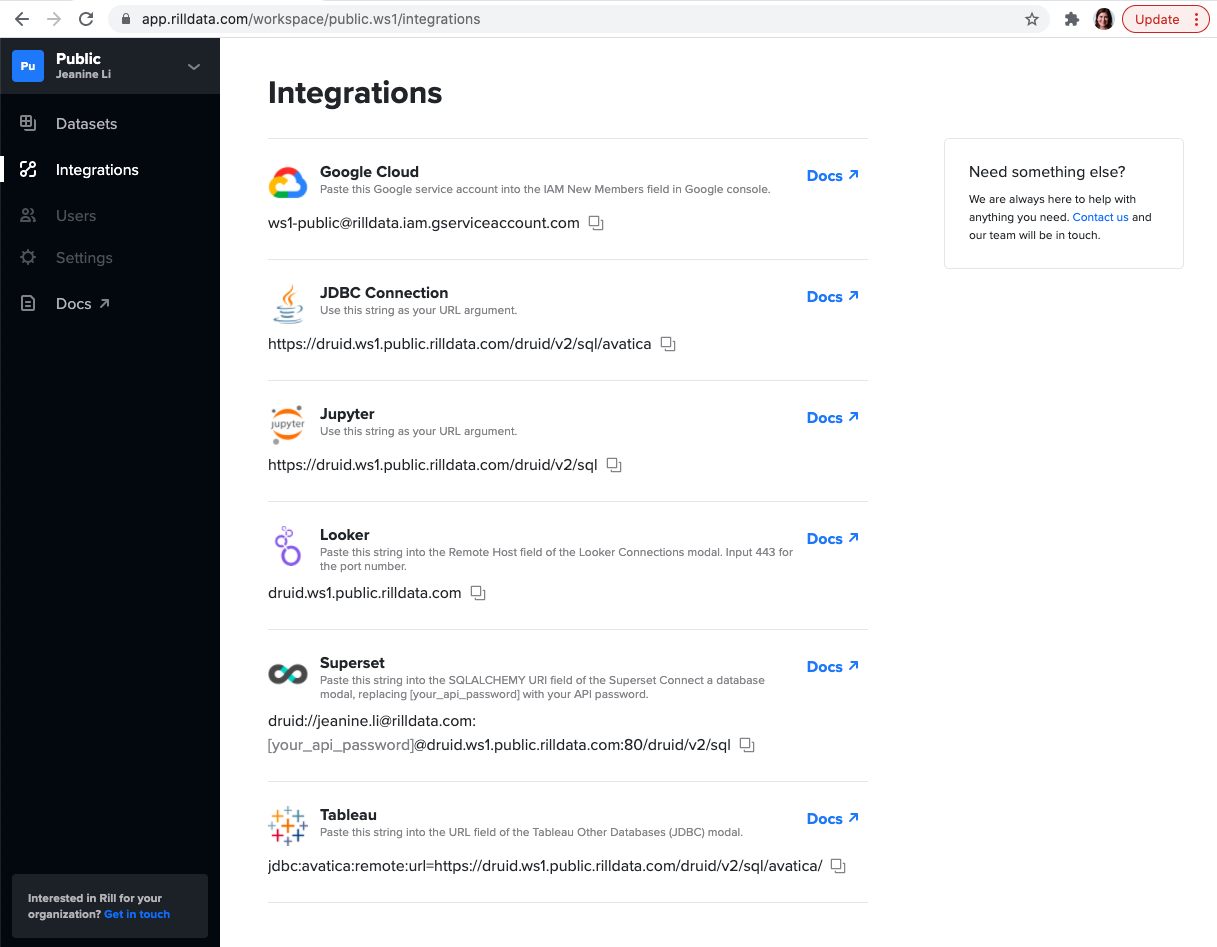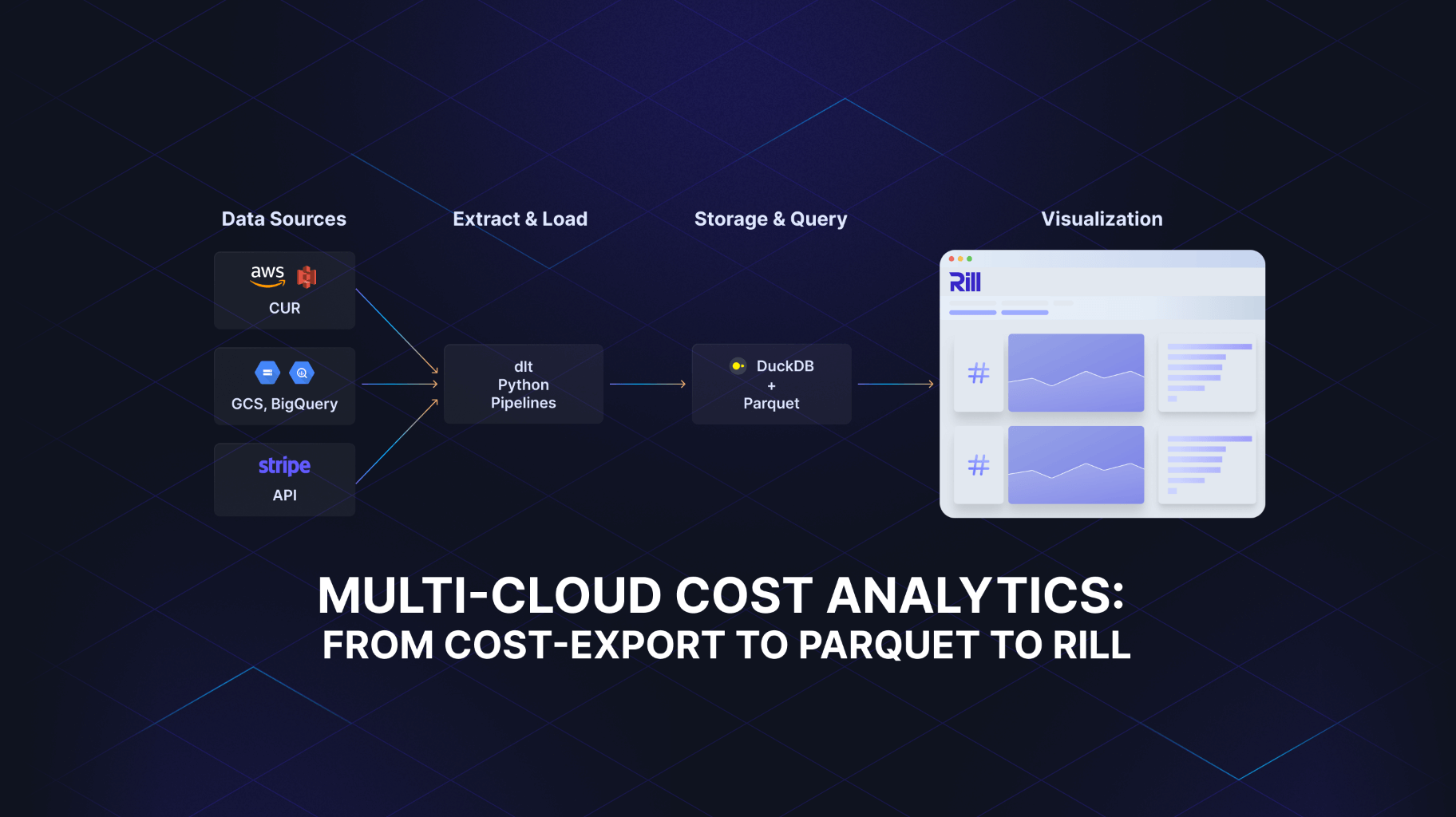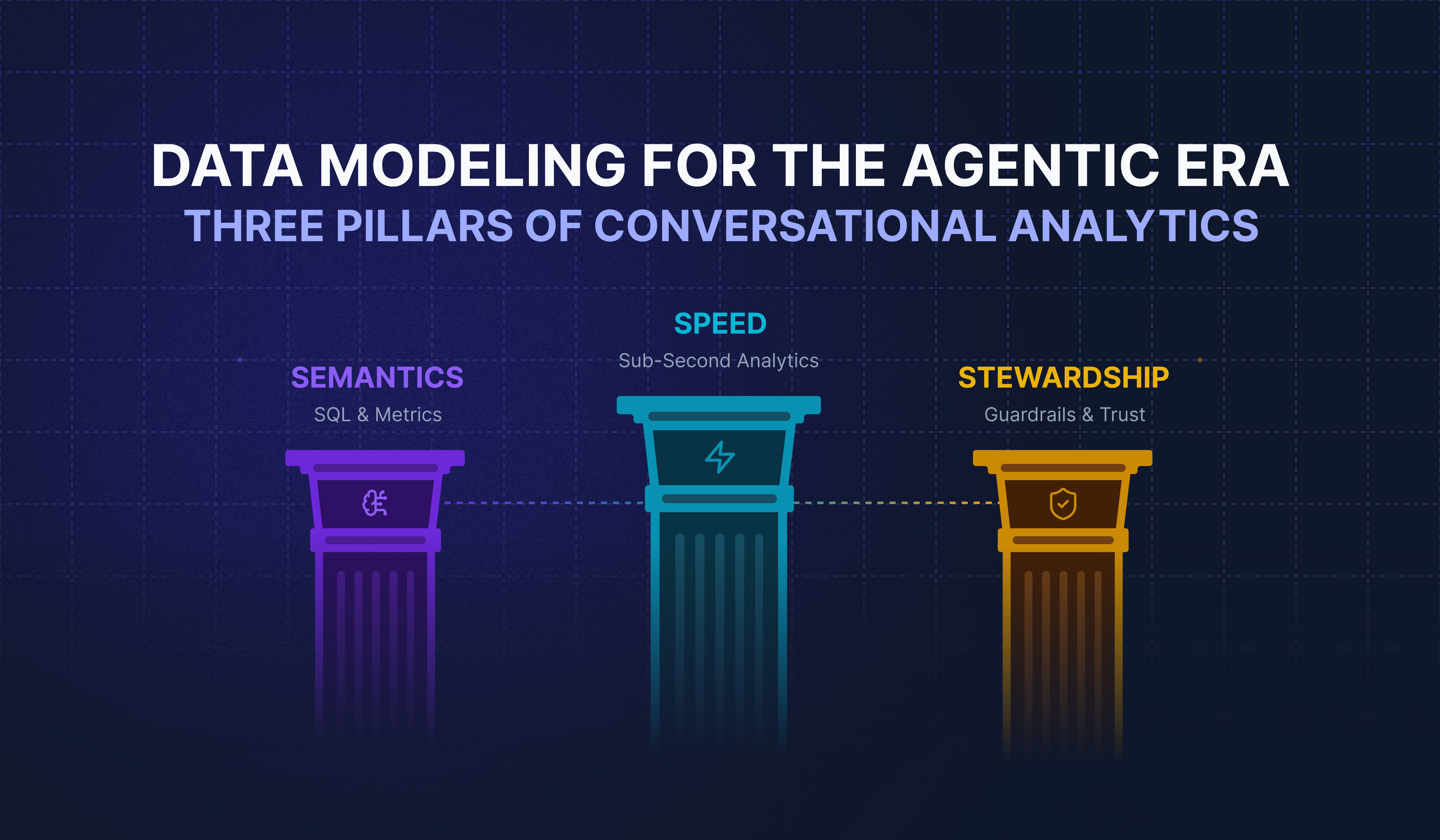%20copy%208.png)
Guide: Connect Druid to Tableau for sub-second dashboards



In a previous blog post we shared the idea of leveraging data interoperability for data visualization. In that post, we discussed the growing market of visualization tools and the importance of staying flexible. At Rill, we are agnostic about data visualization providers so we enable easy integration with your existing tools. Here, we provide a step by step guide on how to combine the performance of Druid with the interactivity of Tableau to generate sub-second dashboards for your operational analytics needs.
The need for a Tableau Druid connector
Druid is a real time analytics database that is used to execute fast OLAP queries on time series data. While some Druid deployments are purpose built for specific operational tasks, the ability to connect industry standard analytics products to your Druid data makes it easy to get blazing fast access to your data with all the bells and whistles provided by that product. For example, you may want to create a quick dashboard, use parameters and calculations, or share and export your data. These features are readily available in industry products such as Tableau and Looker, and the ability to use them with your Druid data gives you flexibility and power.
If your analytics tool feels sluggish when connected to your existing data warehouse, you will be pleasantly surprised when you connect it to Druid. No more waiting for each drag-and-drop to return! The speed of Druid means that you’ll get sub-second access to your data—that translates to an interactive experience when used with tools like Tableau and Looker.
Rill’s elastic and fully managed cloud service for Druid gives you the flexibility to leverage the speed of Druid in either a purpose-built analytics deployment or with the ease of your favorite analytics tools. If you have access to Tableau, use this short guide to walk you through how to connect Tableau to Rill’s public Druid cluster. Once you follow these simple instructions, you’ll be able to create Tableau dashboards on top of any of Rill’s public datasets and you’ll see the speed and interactivity that you can achieve when your dashboard is powered by Druid.
Getting started in Druid
- In order to access Rill’s public Druid cluster from either Tableau or Druid, you’ll first need a login. To create your login, simply log in to Rill with any G-Suite account. You’ll find yourself in the Rill Cloud Console (RCC) - this is your interface to the Rill service. It bundles Druid as a secure, managed service, allowing you to load and query data in a managed Druid cluster.
- Once you are logged in, you’ll be part of a workspace called “Public”, which contains a number of preloaded datasets. You’ll be viewing a screen that looks like this:

- If you’d like to explore these datasets from within RCC, click on Druid Console. This will open the Apache Druid console in a new tab. Note that the “look” changes because you are no longer looking at RCC; rather, you are now viewing the open source version of Apache Druid, which Rill layers with security and scalability.
- Click on a dataset such as “citibike_tripdata” in the left panel to see its columns. You can type a select query directly into panel at the top, for example, “select * from citibike_tripdata”. Then type Run to run it.
- To prepare for connecting from an external application, you’ll need to create an API password in RCC. Return to the RCC tab and click on your name at the top of the black panel and then click Account. From Account, click on Enable to the right of API Password, create your password, then click Enable Password. You’ve just created a password that can be used from an external application to access the druid data in your workspace.
- Click the back button in your browser to return to the RCC Datasets page.
Visualizing your data in Tableau
Ok, so now you have some data in Druid, but what can you do with it? Let’s bring it into Tableau.
- In RCC, click on Integrations in the left panel. You’ll see this:





Next steps
This brief walk-through shows how easy it is to integrate Tableau and Druid. We encourage you to play around with Tableau more using our public databases. If you’d like a simple introduction that leads you through other features and functionality provided by Rill and our public workspaces, check out our tutorial.
Druid has many interesting characteristics that make it fantastic for accessing your hottest data—that data that you want streamed in with sub-second access. While Druid is unique in its ability to stream data and provide fast queries, it is not unique in the language it speaks: SQL. Because it speaks SQL, it can be used as a database backend for a variety of industry standard data visualization tools. Rill currently integrates seamlessly with industry standard business intelligence tools such as Looker, Tableau, Superset, Jupyter, and custom applications. In the coming weeks, we will share guides for using Druid with other BI tools as well.


Ready for faster dashboards?
Try for free today.

.png)
.svg)

